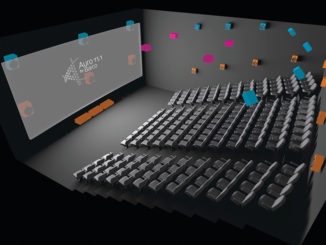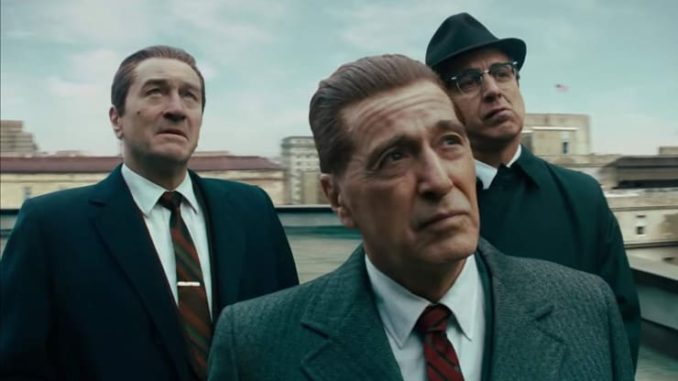
by Patrick Z. McGavin
Martin Scorsese had a radical conception of how he wanted his new crime epic, “The Irishman,” to sound — and often, that meant no sound at all.
“I don’t want a lot of sound effects,” Scorsese told his longtime picture editor, Thelma Schoonmaker.
“One of my jobs was to get the sound editors … to understand that they were not going to be pumping a lot of stuff into this movie,” Schoonmaker said in a recent interview with CineMontage. (See our recent interview with Schoonmaker here or in the pages of the Q4 CineMontage print edition.)
Re-recording mixer Tom Fleischman and supervising sound editors Eugene Gearty and Philip Stockton have been essential collaborators with Scorsese since the 1980s.
The trio talked with CineMontage about the particular challenges and scope of “Irishman,” the $160 million, 209-minute epic about a mob contract killer played by Robert De Niro who befriends labor leader Jimmy Hoffa (Al Pacino.)
CineMontage: You obviously have a long creative history with Thelma Schoonmaker and Martin Scorsese. What is it like to work with filmmakers who are so painstaking in their process?
Tom Fleischman: Marty is totally focused on telling the story. That is the key thing in his mind, whether it is with dialogue, music or sound effects. Whatever element of the track is important to tell the story is always the primary focus.
It’s an intense experience working with him. Before he even sees it, I work with Thelma and we get everything pulled in to a point where she feels he will be happy with it. Then he comes in and we start to pick it apart.
The tone of this film is much different than his other gangster films. It is grave and mournful. How did the sound reflect that?
Fleischman: It’s a different kind of movie than the ones he has made in the past. One of the challenges was to keep it as quiet as it is. There are many intimate scenes, and Thelma and Marty both pushed us to pare it down, keep it simple. Very few things that will distract from the dialogue in the intimate scenes—the scenes in the restaurant, the scenes in the hotel room between Robert De Niro and Al Pacino.
People think of sound mixing and sound editing, with these big action sequences, like war movies and space movies, as the hardest kind of mixing to do because there are so many elements involved. Really, for me, the most challenging thing for me in the mix is a quiet, dialogue scene between two characters when you don’t want anything in the track to distract in any way from what is being said. Depending on how well the dialogue has been recorded, it can be quite a challenge to accomplish that.
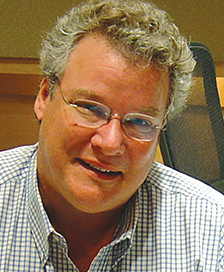
Marty wanted it to be restrained and quiet, particularly the scenes between De Niro and [co-star Joe] Pesci, and the scenes between De Niro and Al Pacino. They were meant to be almost silent. We tried to get the track as clean and quiet as we possibly could.
Eugene Gearty: When I first met with Thelma and Marty a couple of years ago after reading the script, Marty really wanted it to be a road movie. That was his idea, the journey. In subsequent edits and throughout the process, that was not as critical as the original concept.
I think the entire sound job for this movie is fascinating.
Marty’s concept in essence threw [it] all out of the window. His idea was not to get in the way of the storytelling. The story, if I may say, is so intimate it is almost like a documentary. As a result, with this purity of idea, of streamlining things and focusing on the eyes and facial expression and having nothing interfere with that, after
I realized the number of scenes they gave me early on, that was all they really cared about in the essence of the movie.
So much has focused on the visual effects work that shows actors like DeNiro, Al Pacino and Joe Pesci at different stages of their lives. What about matching their voices to a specific time frame? Because voices change at different periods of a person’s life.
Phillip Stockton: I was getting calls a year before I did any work on any work on the film, saying, what are we going to do?
I did a lot of work and research and tried a lot of different programs. The director and editor were nervous about how it was going to work out. They tried a couple of different places before I did anything to see what the options were. A couple of different plug ins and programs. I ended up getting some stuff that somebody else did and doing my own stuff, and Marty and Thelma both come to the studio and hear what I did.
They loved what I did, less obvious, quite a bit more subtle. I think, over time, as we were mixing the film, eventually with everybody there, nobody even noticed anymore, which is how I wanted it.
I did every line individually and just matched what I saw. Fortunately the visual effects were coming in. We had a lot of them before I started doing any work. By the time I got started, I could really see how a person was going to look. I actually listened to films with the characters when they were de-aged.
When De Niro was like 35, which is what he was in some of the scenes, I tried to match the timber, the pitch, the timber of his voice to that. I didn’t go crazy. I didn’t try to go too far. I think the results were great. People don’t even notice, or people don’t even think about his voice has been treated.
It feels so simple and natural, but sound is such a complex part of the filmmaking process. What makes it so difficult?
Fleischman: I think part of it is the advent of technology. They can shoot with multiple cameras. Film is mostly gone, and they shoot everything on digital now. Cameras are smaller and lighter, and that makes it harder to get a good track recorded on the set. You are shooting with multiple cameras. You can’t always get a boom. You are struck with lavalier microphones, radio microphones, and those are sometimes problematic.
It can all be worked out in the mix, eventually, hopefully, and if not, there is always ADR. A lot of directors shy away from ADR because you are losing the original performance. Marty has always shied away from ADR. As the years have gone by, he accepted it more.
I remember the first couple of films, he’d just forbid it entirely. Every once in a while, we had to shoot an ADR line and it was always a struggle. We’d wind up bad production sound over ADR. The track was bad, but the performance was what he was interested in.
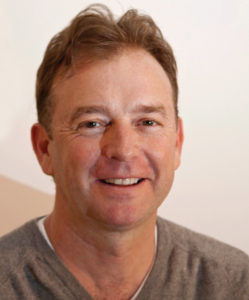
Stockton: The voices themselves [in ADR] sound different. Sometimes the same scene is shot over a year later, and you are mixing and matching everything. Even voiceover is like that. People sound differently on different days. It’s a real challenge. Not just low-budget films, but for any film. Larger budget films are under made under very difficult conditions sometimes. Everybody is moving. The lavaliers are being bumped into, clothing is being scraped across.
Is there a moment you are especially proud of in “Irishman”?
Gearty: One of my favorite points, sound-wise, we are on a very tight shot of the DeSoto car where Frank is going to blow up the laundromat. I had so much fun working with Marty in that scene. It was all about the music, and the music was a bolero. In the most simple possible way, we used the car effects as this poetic, ballet-type feeling.
Marty did not care one bit about what kind of sound effects I was using, providing it was used to somehow poetically support what was happening musically. That was a scene that had no dialogue. Truly it was painting with a very fine brush. It was a lot of fun to accomplish a strong emotion with so little sound.
We had 15 microphones, we went with a mono recording of mine that I did with the De Soto back in the winter of 2017. It didn’t even match the action of the car. Marty didn’t care. It was that it felt right, it had an idling sound that was very ballet-like in how the car was moving and how Frank was scoping out the place. I loved that scene.
Working on a film of this scope and artistic importance must have been simultaneously challenging and exhilarating.
Fleischman: I remember going to the first screening, and it just totally whipped me apart. It’s so funny and amusing and intermediating historically and dramatically. The first two-thirds of the movie is like a wild ride. Then you get to the end, and it just rips your guts out. It becomes much more than a gangster film. It really comes to fruition at the end of the film, and it becomes very emotional.
It was really a great experience from beginning to end. It’s one of the best movies Marty has ever made, and a joy to work on.
Gearty: It is definitely challenging. I’ve been doing this for more than 30 years. Tom has mixed everything. We’re smart, we know what we are doing. We are learning different techniques on how to tell a story. Marty’s in his 70s, he’s made a bazillion films. It’s very challenging at the time, but it is so great to have them satisfied with their intention, and we didn’t get in the way of that.
Stockton: With Marty and Thelma, everything is about performance. Right down the line. Often they just don’t pay attention to whether the cut matches perfectly. That has been their style forever, and it is very effective and it works because the performances are what you are there to see and what you are paying attention to.
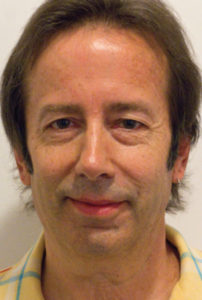
What’s Thelma’s working style like?
Gearty: She spends so much time with Marty and knows him so well, she can ask us for things. She runs the show completely. Marty will come in at the end after we have gotten the reel together. Thelma comes in and she really starts fine-tuning everything. When she is happy, we show it to Marty.
She is amazing. We work very closely with her. Emotions get high in the mix. You have to re-think your process of what you have learned as a sound editor. “This is what I’d normally do,” but this is what is working in this particular situation. It becomes this real challenge of how to switch gears.
Stockton: It has been over 30 years for me since I started working with them. The first job I ever sat in on the mix for “The Last Temptation of Christ” (1988), and I worked with them before on one another project. I remember being incredibly nervous, because their reputation was that every detail had to be perfect.
I know what she wants, and I usually try my best to get it. Thelma crafts the film with Marty, and between the two of them, they have made a lot of decisions before it even gets to us. Our job is to try and preserve the things. What they say constantly, it has to have the same emotion. If my dialogue sounds any different, or not as warm, it has camera noise or whatever, it has to have the same emotional effect. That is what all of us are there to try and achieve. That emotional effect, either improve on it or keep it the same.
Patrick Z. McGavin is a Chicago-based freelance writer and film critic.



